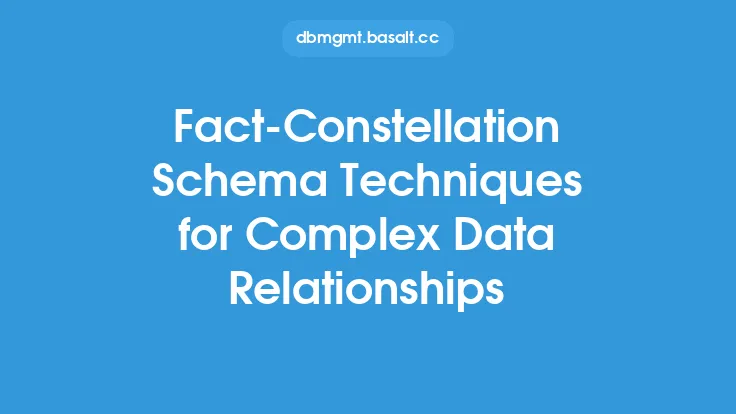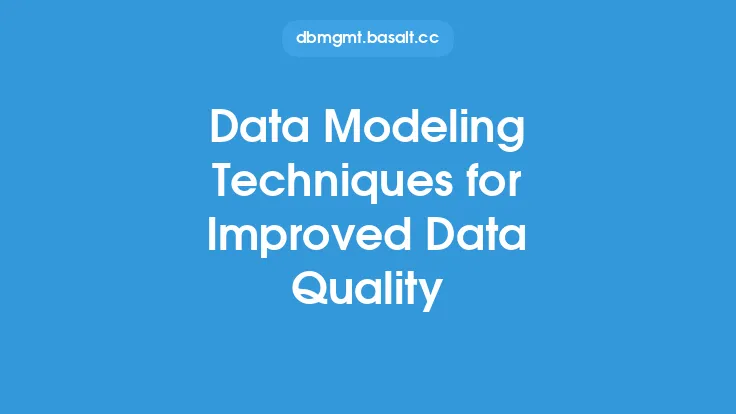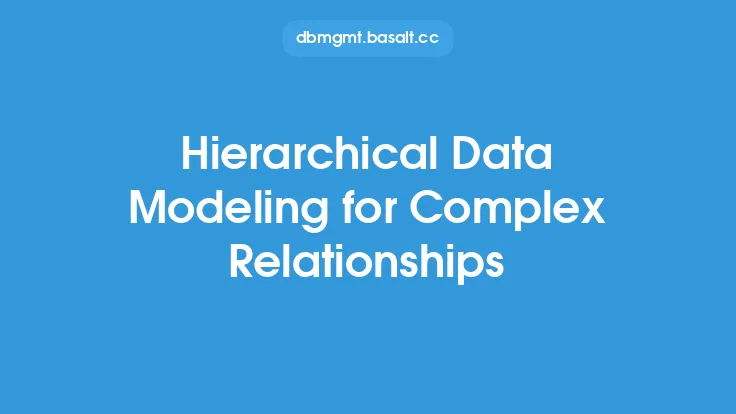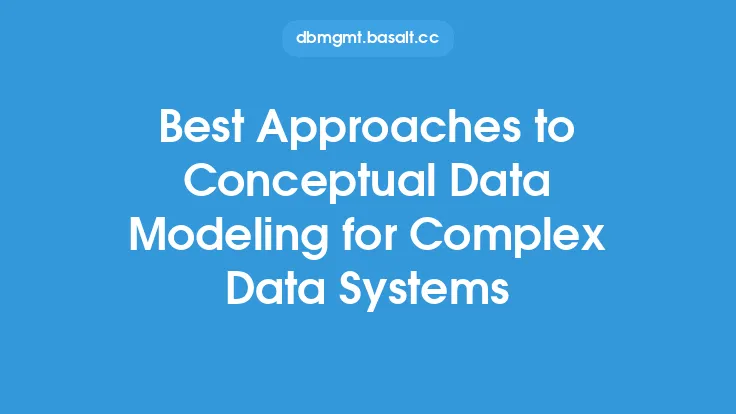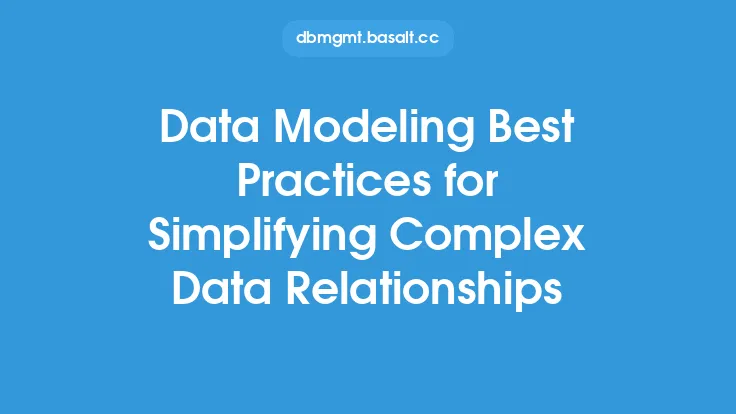Data modeling is a crucial aspect of data management, as it enables organizations to make sense of their complex data sets and make informed decisions. With the increasing volume, velocity, and variety of data, traditional data modeling techniques are no longer sufficient to handle the complexity of modern data sets. Advanced data modeling techniques are required to capture the nuances of complex data relationships, hierarchies, and dependencies. In this article, we will delve into the world of advanced data modeling techniques, exploring the concepts, methods, and tools used to model complex data sets.
Introduction to Advanced Data Modeling
Advanced data modeling techniques are designed to handle complex data sets that cannot be adequately represented using traditional data modeling methods. These techniques are used to model data sets with complex relationships, hierarchies, and dependencies, such as those found in big data, IoT, and social media data. Advanced data modeling techniques include data vault modeling, fuzzy data modeling, and graph data modeling, among others. These techniques provide a more detailed and accurate representation of complex data sets, enabling organizations to gain deeper insights and make better decisions.
Data Vault Modeling
Data vault modeling is an advanced data modeling technique that is used to model complex data sets with multiple relationships and hierarchies. This technique is based on the concept of a data vault, which is a centralized repository that stores all the data entities and relationships in a single location. Data vault modeling is particularly useful for modeling large and complex data sets, such as those found in data warehouses and big data environments. The data vault modeling technique involves creating a set of tables that represent the data entities and relationships, using a combination of hub, satellite, and link tables. Hub tables represent the core data entities, while satellite tables represent the attributes and relationships of the core entities. Link tables are used to establish relationships between the hub and satellite tables.
Fuzzy Data Modeling
Fuzzy data modeling is an advanced data modeling technique that is used to model data sets with uncertain or imprecise data. This technique is based on the concept of fuzzy logic, which is a mathematical approach to dealing with uncertainty and imprecision. Fuzzy data modeling is particularly useful for modeling data sets with missing or incomplete data, such as those found in social media and sensor data. The fuzzy data modeling technique involves creating a set of fuzzy rules and membership functions that define the relationships between the data entities and attributes. Fuzzy rules are used to define the relationships between the data entities, while membership functions are used to define the degree of membership of each data entity in a particular set.
Graph Data Modeling
Graph data modeling is an advanced data modeling technique that is used to model data sets with complex relationships and hierarchies. This technique is based on the concept of graph theory, which is a mathematical approach to modeling relationships and hierarchies. Graph data modeling is particularly useful for modeling data sets with complex networks and relationships, such as those found in social media and recommendation systems. The graph data modeling technique involves creating a set of nodes and edges that represent the data entities and relationships. Nodes represent the data entities, while edges represent the relationships between the entities. Graph data modeling is a powerful technique for modeling complex data sets, as it enables organizations to capture the nuances of complex relationships and hierarchies.
Object-Role Modeling
Object-role modeling (ORM) is an advanced data modeling technique that is used to model data sets with complex relationships and hierarchies. This technique is based on the concept of objects and roles, which are used to define the relationships between the data entities and attributes. ORM is particularly useful for modeling data sets with complex business rules and constraints, such as those found in financial and regulatory data. The ORM technique involves creating a set of objects and roles that represent the data entities and relationships. Objects represent the data entities, while roles represent the relationships between the entities. ORM is a powerful technique for modeling complex data sets, as it enables organizations to capture the nuances of complex relationships and hierarchies.
Advanced Data Modeling Tools and Techniques
There are several advanced data modeling tools and techniques available, including data modeling software, data governance platforms, and data quality tools. Data modeling software, such as ER/Studio and PowerDesigner, provide a range of features and functions for creating and managing data models. Data governance platforms, such as Collibra and Informatica, provide a range of features and functions for managing data governance and data quality. Data quality tools, such as Trifacta and Talend, provide a range of features and functions for managing data quality and data integrity. These tools and techniques are essential for advanced data modeling, as they enable organizations to create, manage, and maintain complex data models.
Best Practices for Advanced Data Modeling
There are several best practices for advanced data modeling, including the use of standardized data modeling notation, the creation of a data modeling framework, and the establishment of a data governance program. Standardized data modeling notation, such as the Object Management Group (OMG) notation, provides a common language and set of symbols for creating and communicating data models. A data modeling framework provides a structured approach to creating and managing data models, while a data governance program provides a framework for managing data governance and data quality. These best practices are essential for advanced data modeling, as they enable organizations to create, manage, and maintain complex data models.
Conclusion
Advanced data modeling techniques are essential for organizations that need to make sense of their complex data sets. These techniques, including data vault modeling, fuzzy data modeling, and graph data modeling, provide a more detailed and accurate representation of complex data relationships, hierarchies, and dependencies. By using these techniques, organizations can gain deeper insights and make better decisions. Additionally, the use of advanced data modeling tools and techniques, such as data modeling software and data governance platforms, can help organizations to create, manage, and maintain complex data models. By following best practices, such as the use of standardized data modeling notation and the establishment of a data governance program, organizations can ensure that their advanced data modeling efforts are successful and sustainable.
